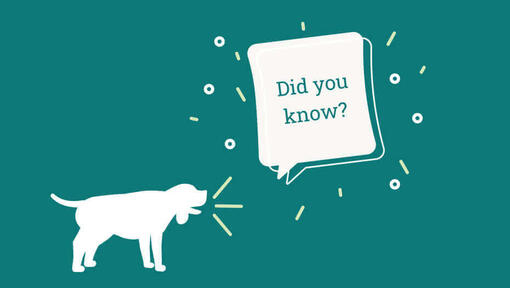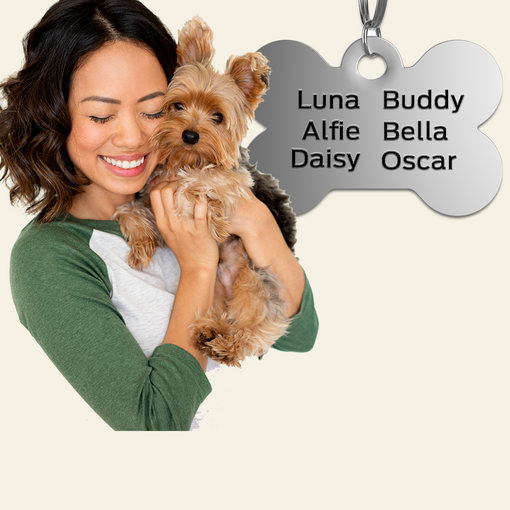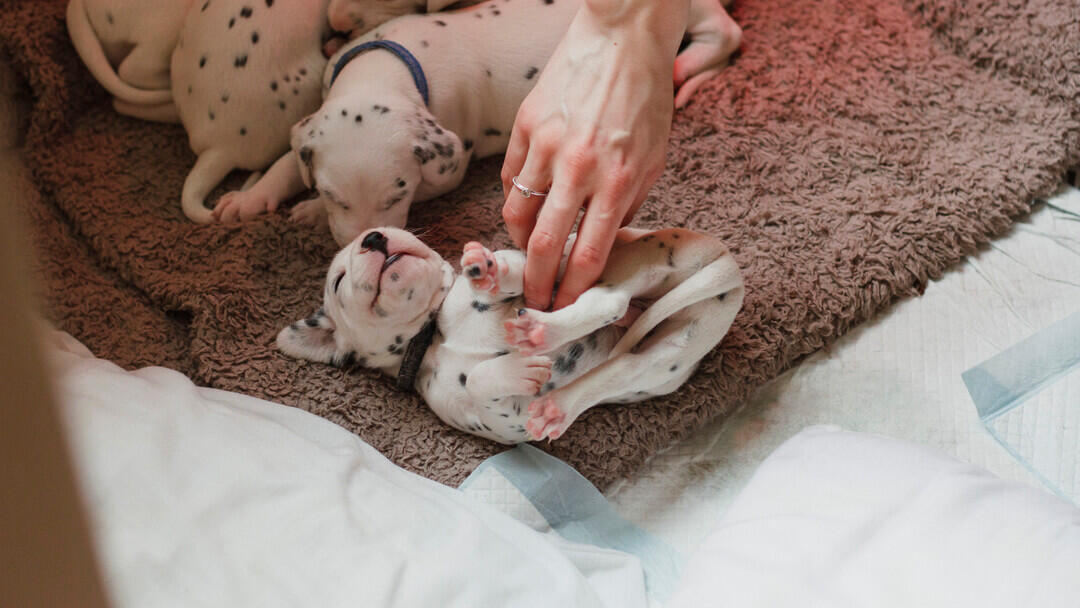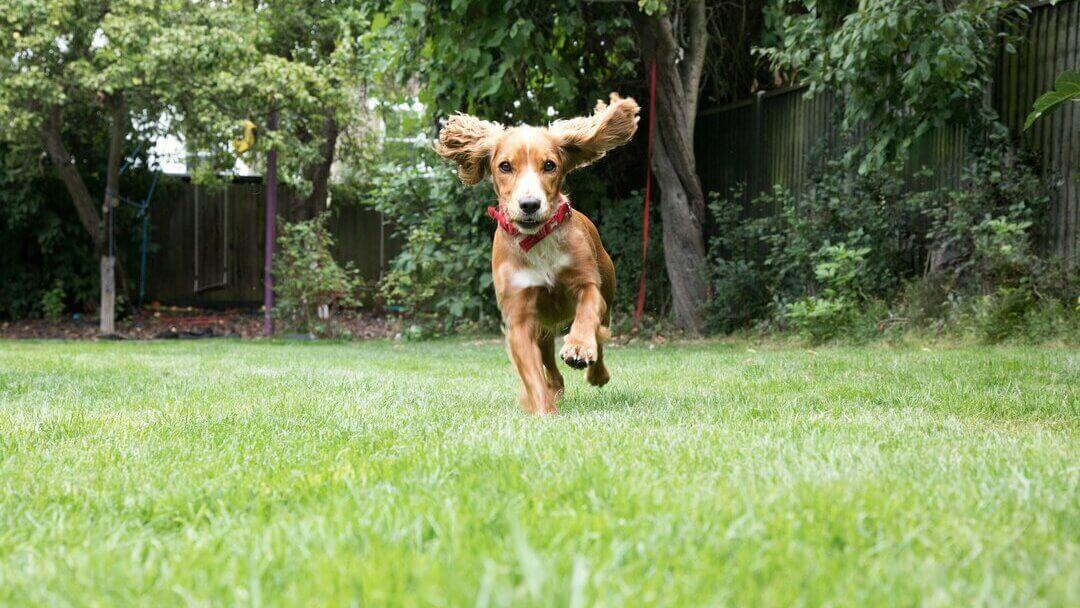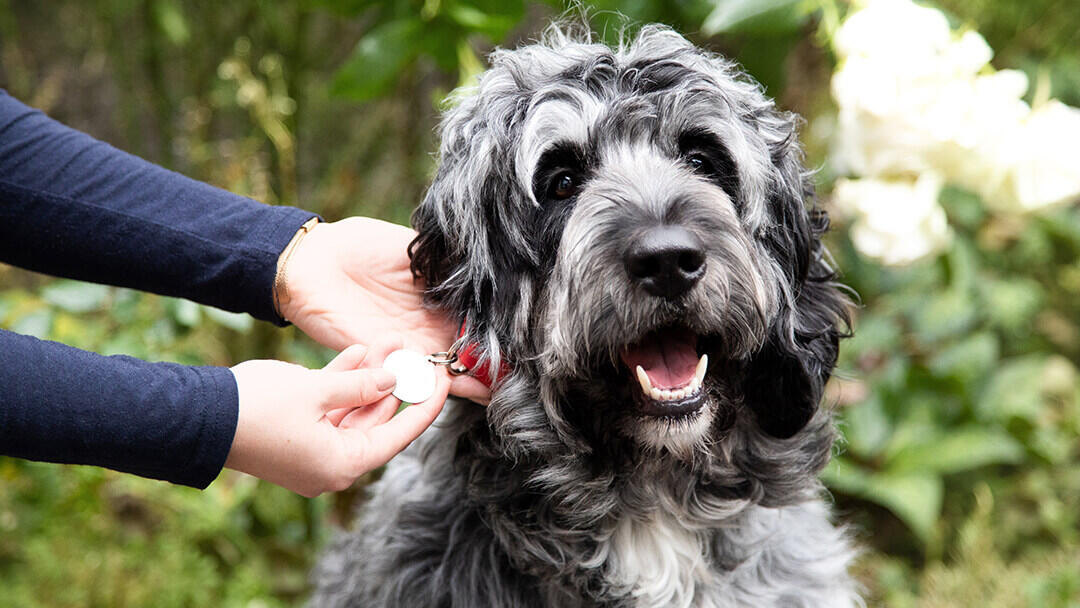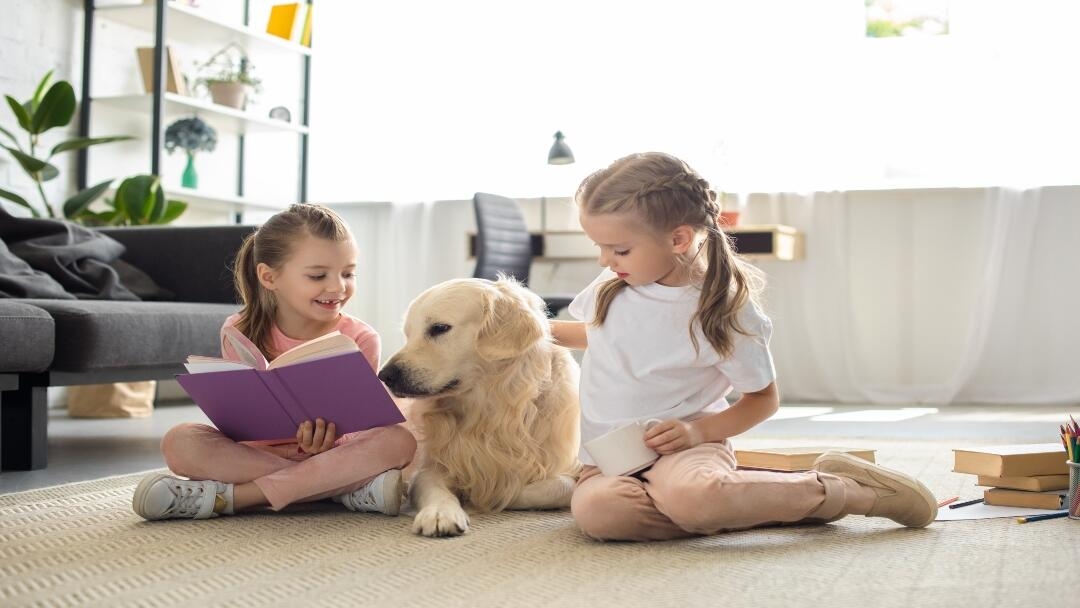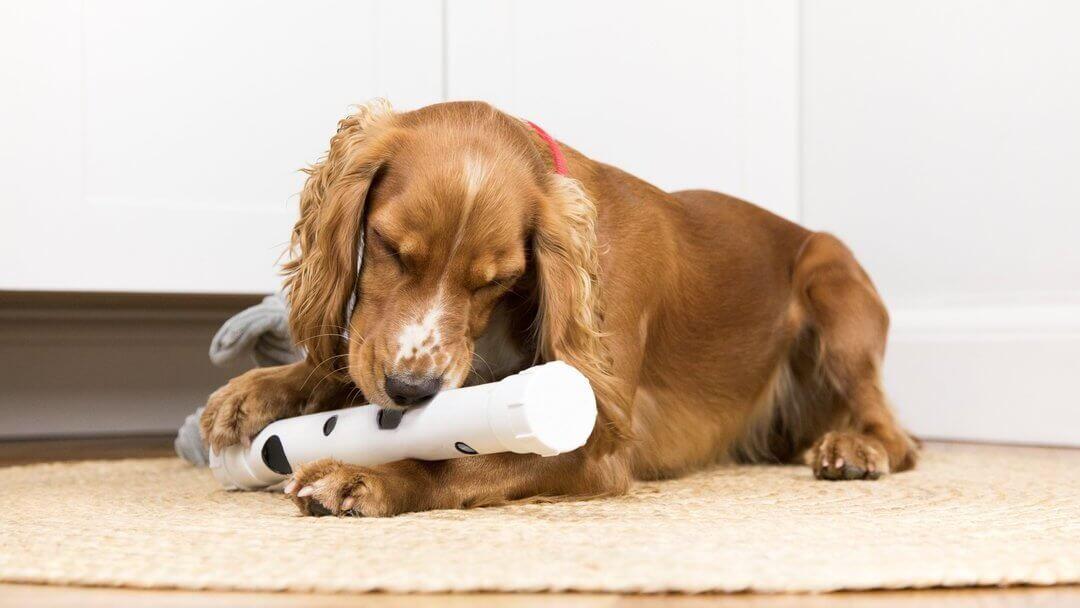
Labrador Retriever: 55-57cm
Poodle – Standard: over 38cm
Miniature: 28-38cm
Labrador: Black, yellow or liver/chocolate. Yellows range from light cream to red fox
Poodle: All solid colours
- Dogs suitable for experienced owners
- Extra training required
- Generally healthy breed
- Enjoys vigorous walks
- Enjoys one to two hours of walking a day
- Large dog
- Some drool
- Requires grooming daily
- Chatty and vocal dog
- Welcomes everyone happily
- Generally friendly with other dogs
- Gets along with other pets with training
- May need additional supervision to live with children
- Needs a large garden
- Can live in semi-rural areas
- Can be left occasionally with training
There is often a degree of variation in the health conditions and issues that crossbreeds are predisposed to. This is because some individuals retain more of the characteristics of one breed over the other.
For more information on the health problems that may affect this crossbreed, visit the Labrador Retriever and Standard or Miniature Poodle breed pages.
Labradoodle Appearance
The representatives of this crossbreed can vary in size, shape, coat types, and temperaments, depending on how they have been bred. The Labradoodle colours can vary as well, as they depend mostly on their parents’ coats. The Labradoodle can be a first cross with one Labrador and one Poodle parent, they can be bred back to one of the original breeds or be two Labradoodles bred together.
| Family-friendly: | 5/5 |
| Exercise needs: | 5/5 |
| Easy to train: | 4/5 |
| Tolerates being alone: | 4/5 |
| Likes other pets: | 4/5 |
| Energy level: | 5/5 |
| Grooming needs: | 4/5 |
| Shedding: | 3/5 |
The Labradoodle is one of the best-known and established of the ‘designer crossbreeds’. It originated in Australia in the 1970s, when the Australian Guide Dog Association received an enquiry from a lady in Hawaii requesting a Guide Dog that wouldn’t cause her allergies to flare up. She chose Australia because the animal health arrangements meant that a dog bred there could come straight into her home in Hawaii without having to spend time in quarantine.
The Association were already using Labradors as guide dogs, and so they needed to cross one with a non-shedding breed. They imported a white Standard Poodle from Sweden that had excellent working bloodlines, and the first (intentional) Labradoodle litter was born.
Since then, they have been bred, both responsibly and irresponsibly, in the quest to find a friendly, non-shedding family dog. This has been done with varying degrees of success, and indeed some Labradoodles have excelled as assistance dogs around the world. Those who are enamoured of them hail them as the perfect large companion dog (as long as they get enough exercise!).
While there are breed clubs in the UK and all over the world, the Labradoodle currently isn’t recognised by any international kennel clubs.
The two breeds that go into the formation of the Labradoodle are the Labrador Retriever and the Standard Poodle.
Labrador Retriever
Country of Origin: Canada
The Labrador Retriever breed originated not in Labrador, but on the coast of Newfoundland in the 17th century. They were trained to bring in the fishing nets through the icy waters for the fishermen and, in the early 19th century, were brought to Poole Harbour in Great Britain. Due to their lovely personality, the fishermen started getting offers from Englishmen to buy them. The breed also had working abilities, which made them instantly successful as a gundog. The Earl of Malmesbury became fascinated by these dogs, known at that time as Saint John's Dogs, and he started breeding them, calling them Labrador Dogs. Today Labradors are still used as working gundogs as well as being beloved family pets.
Standard Poodle
Country of Origin: Germany
The original Poodle is the Standard Poodle, a water retrieving dog. Their unusual haircuts were not about fashion, but rather a way for owners to make sure their dogs didn’t get waterlogged and become too heavy to swim easily in lakes. While keeping the vital organs and joints protected, much of the rest of their hair was shaved off. The Miniature and Toy Poodles were created purely as smaller versions of the original Poodle, for owners who didn’t want such a large dog, but were enchanted by their personalities and enthusiasm for all kinds of work.
The Labradoodle can have any combination of the two breeds in their appearance, behaviour and temperament.
Ideal Labradooodle owners should love the behaviour and personality of both Poodles and Labradors, and be easy going about coat type, as with this crossbreed there are no guarantees. Expect a big, confident, intelligent dog with lots of enthusiasm who never grows up, and be willing to supply the time, energy and training to meet those needs. Grooming can be an issue as there’s no guaranteed way to tell coat type until the dog is mature, and some coats will be extremely hard work.
Both the breeds that make up the Labradoodle are highly active and enjoy exercise, and will be happy with two hours plus every day. But they will still enjoy games, training, interactive toys and being involved in all family activities at the rest of the time too.
As the Labradoodle size is quite large, they would need a good-sized living space, plus they are very active and so will appreciate a large garden, and access to the great outdoors for the long walks they will need.
Large breed dogs, as well as having large appetites, benefit from a different balance of nutrients including minerals and vitamins compared to smaller-breed dogs. Labradoodles like most large breed dogs can be prone to bloating and stomach problems, but smaller, more frequent meals can help minimise this risk.
The Labradoodle diet needs to have the right balance of all the main nutrient groups including a constant supply of fresh water. It's important to conduct regular body condition scores to ensure you keep your dog in ideal shape, and remember to feed him at least twice daily and in accordance with the dog feeding guidelines of his particular food.
It is difficult to predict what kind of coat the Labradoodle is going to have, as they may inherit a coat like a Labrador or they may inherit the Poodle coat (or any mixtures of the two).
This means they may not shed or shed minimally (the Poodle coat) but in that case will require regular trimming. Or else they may shed (the Labrador coat) and may or may not have an unruly coat that is prone to matting. They can be anything from low maintenance to high maintenance so be prepared for either!
Given the Labradoodle size and particular coat, it’s recommended to find a good local groomer who can either look after your pet’s coat, or teach you how to do it yourself, as their coat develops.
Dog ear care is extremely important as Poodles can have problems with excessive hair inside the ears, which can cause infections or sore ears.
Dog training is important for this very active, smart and busy dog. They are a joy to train as both breeds are intelligent and love working with their owner — but they will learn bad habits as quickly as good ones, so reward-based training should start early and be ongoing. This is a great breed for dog sports such as agility or even pet gundog work, and they will love having an active job to do.
It is important to train a Labradoodle to enjoy handling and grooming (as they will need a lot of it) and to happily give up any prizes they may rather hold onto — always using positive, reward-based methods.
The Labradoodle is close to being the perfect family dog. If the Labradoodle is sourced from a reliable breeder, and well-trained from puppyhood, they will make fabulous family dogs, be a total joy to own and will get on with everyone. An untrained or bored Labradoodle can however easily become unruly and overly boisterous.
Labradoodle Fun Facts
- Labradoodles make great therapy dogs. Their warm personality is often a match for people with autism or physical disabilities.
- Among the proud owners of Labradoodles are celebrities like Jennifer Aniston, Tiger Woods, Joe Biden, as well as the Crown Princess and Prince of Norway.
- The Labradoodle lifespan can reach 14 years as both their parent breeds have long lifespans.
FAQs
Depending on the type of coat Labradoodles inherit, shedding can be either minimal or non-existing.
Labradoodles can bark more than other breeds, but they’re considered to be medium barkers as they’ll only be more vocal if they need attention or food, or out of frustration.
Labradoodles are very loving and adore to cuddle when they feel tired and need attention.
In terms of temperament, there aren’t many differences between male and female Labradoodles. However, female Labradoodles can be more responsive to training while males are said to be more affectionate than females.
Found your perfect breed?









